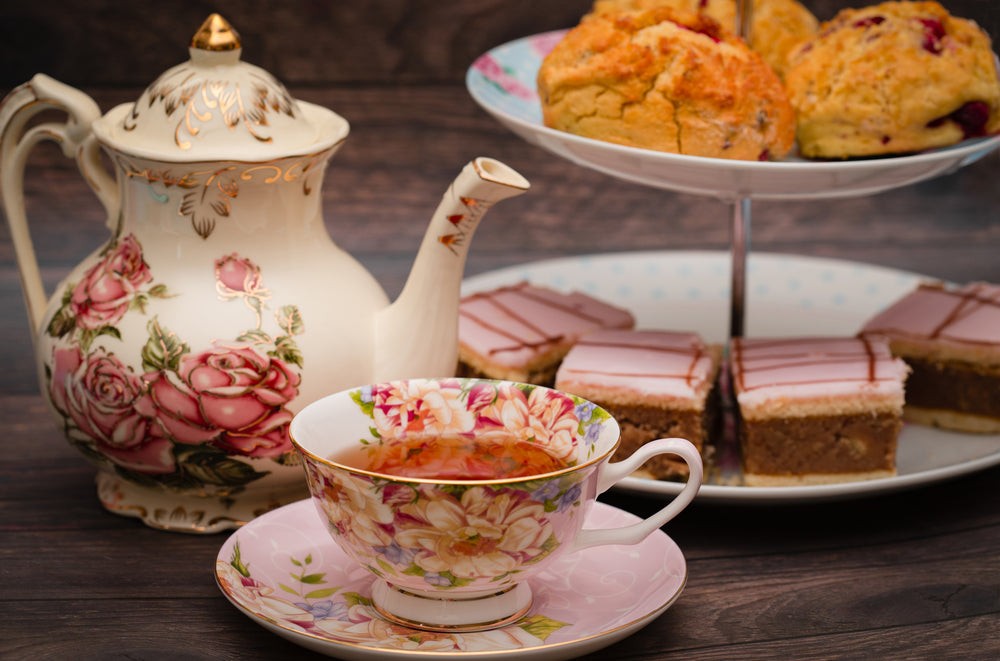Such a simple name TEAPOT, but when you break down the term, you get the idea that this is basically a vessel in which tea is brewed or made! Teapots are standard quintessential table wares for brewing tea in the traditional way. These beautiful items not only serve your guests, but also act as a wonderful mantle-piece and have a pretty great history and origin. Let’s learn about it –
So, what’s the basic look of a teapot?
A teapot is generally a round and stout vessel characterized by a spout to pour out the hot drink, a handle to hold, and a lid for fastening the steeping process and maintaining the temperature.
The Origin?
Many believe that teapots have derived their forms from the ceramic kettles originated in China and the alternate theory says it was inspired by the Islamic coffee pots from the East.
China was a pioneer in the tea industry in the 17th-century colonial era, and they exported not only tea but also porcelain teapots to England and other European countries at that time. It is recorded in history that East India Company had paid commissions to the Chinese Porcelain designers and artists to create teapots as per the company’s preferred designs.
When teapots became popular in the European continent, it inspired artists to make their own versions of them - and they did. Around the mid-eighteenth century, William Cookworthy introduced a way of producing robust and good-quality porcelain akin to the Chinese ones. As a matter of fact, at first, the designs of the teapots were generally inspired by the Chinese ones, but they gradually evolved with time; there came a variety of vintage styles, namely Georgian, Louis, Queen Anne, Art Deco, Indian and more.
At first, drinking tea was a practice among the rich aristocrats, which later boomed among the general population as the taxes were removed on imported tea by William Pitt’s government in the United Kingdom.
It is a fact that the general structure of a teapot was developed in China, but its introduction to Europe was certainly made by the East India Company. With the passage of time, the demand for this tableware item grew with the popularization of tea, and Europe soon had its own factories to make exquisite models of teapots.
Here are some popular models of Vintage Teapots that illustrate absolute beauty
-
Georgian Teapots - Characterized by their glossy and smooth round body connecting to a relatively short spout, this model of teapots was created in the late seventeenth century.
-
Louis Teapots – popular in the days of Queen Victoria, this model had flowery imprints and a small-footed design.
-
Queen Anne – these teapots had a practical vertical shape which caused them to be taller than other variants. They had angled handles and curved spout for better pouring.
Well, the variants are many, but what’s common between all of them? – is a spout, a lid, and a handle; perhaps these three things that were never deducted from any teapot models are the basics of any Tea Pot you would ever see!


 Christmas 2025
Christmas 2025
 Frozen Food
Frozen Food
 Baking
Baking
 Beans, Peas, Soups & Tins
Beans, Peas, Soups & Tins
 Biscuits, Crackers & Cookies
Biscuits, Crackers & Cookies
 Candy / Sweets
Candy / Sweets
 Crisps & Snacks
Crisps & Snacks
 Chemist / Pharmacy
Chemist / Pharmacy
 Desserts
Desserts
 Gravy, Stock & Paste
Gravy, Stock & Paste
 Haggis
Haggis
 Indian Sauces, Paste and Pickle
Indian Sauces, Paste and Pickle
 Jams & Preserves
Jams & Preserves
 Poppy Appeal
Poppy Appeal
 Pot Noodles & Super Noodles
Pot Noodles & Super Noodles
 Scone Mix
Scone Mix
 Gluten-Free / Free From
Gluten-Free / Free From
 Tea Accessories
Tea Accessories
 Teapot & Tea sets
Teapot & Tea sets
 Tea For One
Tea For One
 Sugar & Creamer
Sugar & Creamer
 Tableware
Tableware
 Serveware
Serveware
 Plates & Trays
Plates & Trays
 Bowls
Bowls
 Cups & Saucers
Cups & Saucers
 Mugs
Mugs
 Silverware
Silverware
 Dinnerware - Accessories
Dinnerware - Accessories
 Dinnerware - For Pets
Dinnerware - For Pets
 Victoria Eggs - Hand-Drawn UK Homeware
Victoria Eggs - Hand-Drawn UK Homeware
 Jewelry & Accessories
Jewelry & Accessories
 Sale
Sale
 Christmas Gifts
Christmas Gifts

